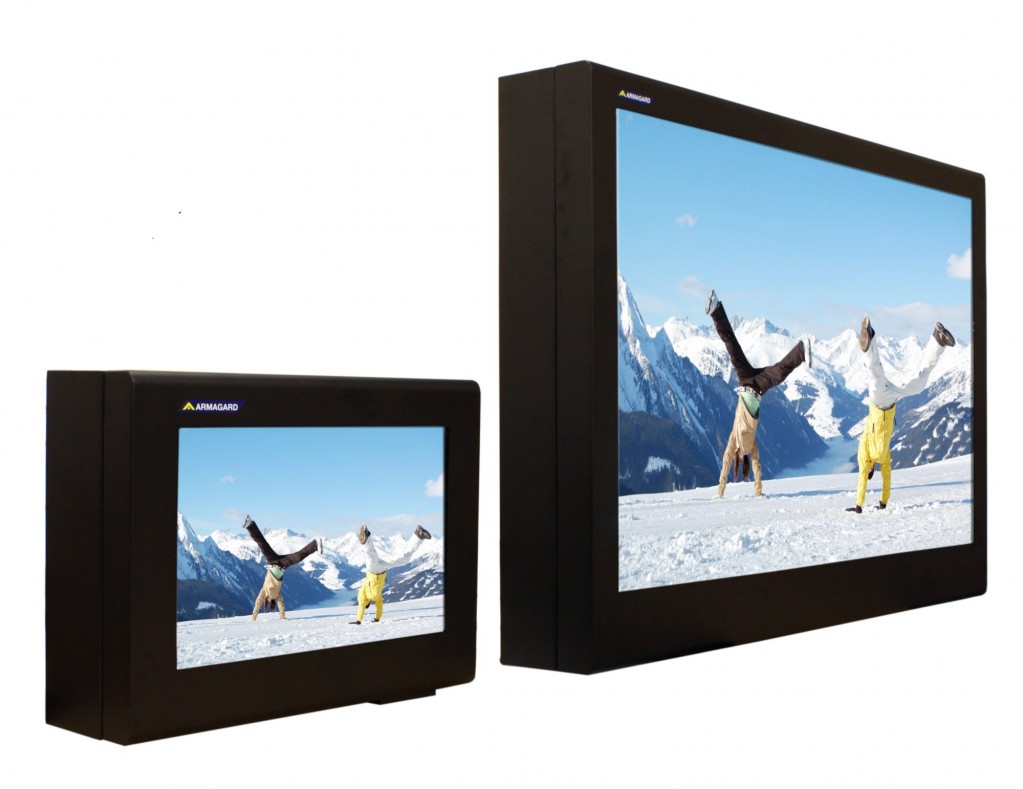What Goes into Protecting Outdoor Digital Signage … Part Two
Posted by: Richard Williams | Posted on: | 0 Comments
Continued…
The Cold
While overheating is vital to counter, when temperatures are at the opposite extreme it can also lead to LCD failure and the end of the outdoor digital signage.
Extreme cold can cause condensation to freeze and expand which can cause damage to the LCD so the temperature inside the enclosure has to be maintained above a minimum. This can be achieved by either ensuring the LCD enclosure is insulated – using the heat generated from the screen itself – or by adding internal heaters for when temperatures get very cold or is permanently so.
In areas where ambient temperatures can reach both extremes it can be extremely challenging as they both have to be countered to ensure the optimum temperature is inside the enclosure at all times.
Screen Protection
Another important aspect of an outdoor LCD enclosure is protecting the screen itself. As the screen is the only part of TV device that has to be viewed, it can also be the most vulnerable. Traditional glass cannot be used in front of the LCD as it is too brittle. Not only will glass be easily broken by an impact but also it can be a hazard – leading to injury if there is an incident.
Shatterproof screens are usually deployed on an LCD enclosure and these normally can withstand most impacts but the screen comes under threat from another source too: the sun.
Sunlight can cause terrible problems for an outdoor digital signage campaign. The brightness of the sun can make the screen virtually unreadable which can only be countered by boosting the brightness of the screen itself. This can result in additional heat being emitted from the display so additional cooling has to be added too; although, transflective technology is now increasingly available and these screens use the sun’s own power to boost the screen image – saving power and preventing the need for additional cooling.
Neither of these methods, however, will prevent sun-glare, another common problem caused by the sun being reflected off the screen. This has probably been experienced by most people at some point on their televisions at home during a bright sunny day and while anti-reflective glass can counter the problem – or at least lessen the effect – it can reduce brightness, and therefore making the problems of screen washout even greater.
LCD Enclosures
So protecting LCD screens in outdoor environments is not as straight forward as you may first have thought and ensuring that any screen to be used as outdoor digital signage is protected from all the elements above is the task of the LCD enclosure manufacturer so ensuring they are building a quality and well-thought out enclosure for you is vital to ensure the success and longevity of your campaign.
Post shortlink:
Popular Products
LCD Enclosure
Need armor for your LCD/LED screen(s)? Outdoors or inside the versatile LCD enclosure protects against thieves, vandals & the weather. Installation idea: NFL stadiums.
Outdoor Digital Signage
Exclusive 46” outdoor screen protection. Dubbed the ‘Totem’, due to its distinct design, it repels damage threats, but attracts audiences. Installation idea: Drive-thru restaurants.
Portrait Flat Panel Enclosure
Safeguard your eye-level advertising display screen(s), indoors or outdoors. Completely customizable, add exciting features like touch screen technology. Installation idea: Restaurant frontages.
Indoor Digital Signage
Popular purchase for retail outlets! Great for ‘point of sale’ persuasion, boost your brand with static & motion advertising from a single unit! Installation idea: Mall of America.





